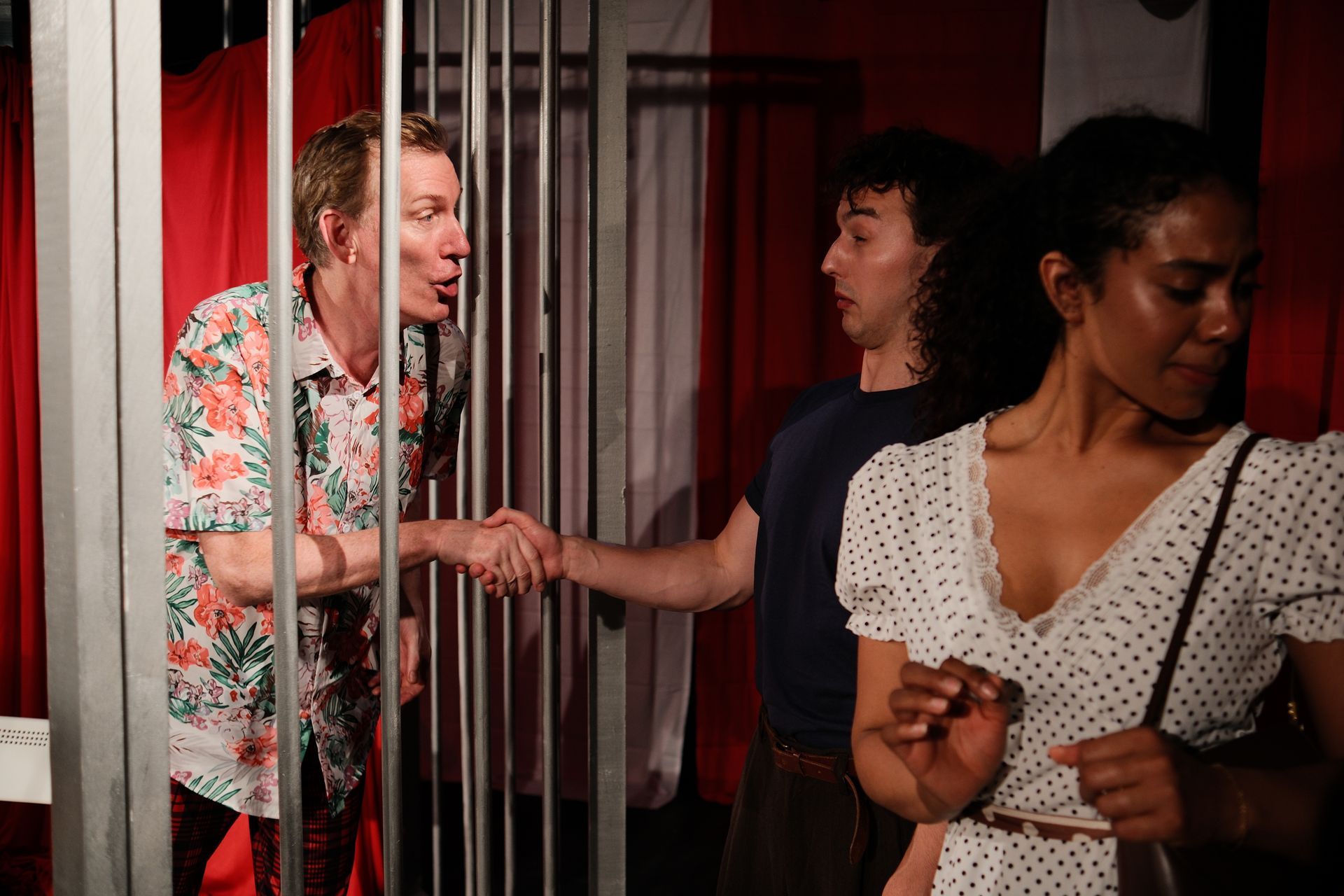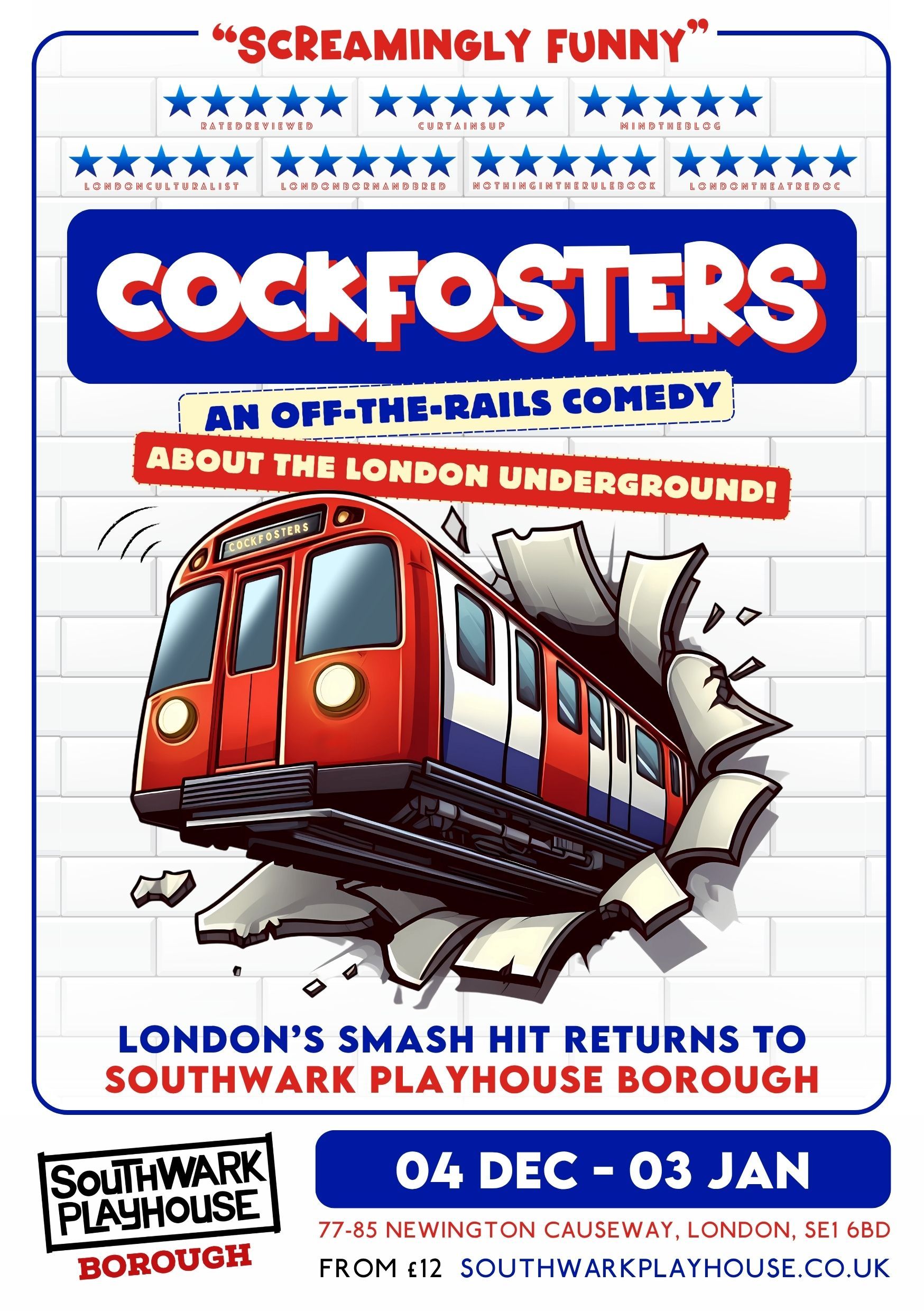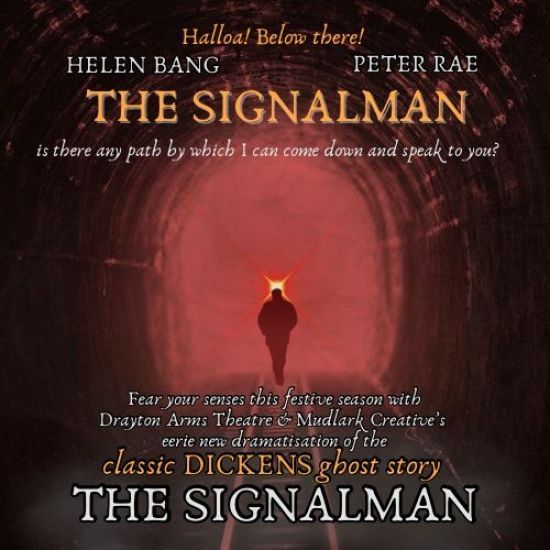REVIEW: PEOPLE IN CAGES at Drayton Arms Theatre 15 – 19 July 2025

‘three playlets that try to re-awaken Absurdist tropes’ ★★ ½
The quite-a-long-time-ago trend for Absurdist Dramas was powered by the idea that a significant philosophical position could be effectively illustrated by a striking dramatic metaphor. Oftentimes, the Absurdist playwrights tried to make the metaphor amusing, so their audience went “Oh my word, my life has been a bit like turning up every day so someone can tell me why I’m turning up every day.” Or “If you look at them rightly, fascists are a bit like rhinoceroses.” It is maybe debatable how effective those metaphors were, but that’s what the writers were trying to do.
David Henry Wilson has put together three playlets that try to re-awaken Absurdist tropes, People in Cages, in which the setting is a cage, there are actors inside the cage, there are actors outside the cage, and the script explains why they are where they are. Sometimes the actors inside come out, and the actors outside go in. That’s the metaphor.
Playlet one, by a very great margin the best of the three, features a man (John Kay Steel) in a cage labelled “killer”, and a young, naïve couple come to gawp at him. The experience is arranged by a gatekeeper, played by Finlay McLean. The gatekeeper is a recurring character. Is the man really a killer? What does a killer look like? Is ‘killer’ merely a cruel labelling by an unfeeling society? Why would anyone want to come and gawp at a killer in a cage? All these and many other questions are raised in the half-hour run-time. None of them are actually answered, but that’s not the point. The point is that the play makes the audience consider them.
And really, the problem is that they are not questions I’ve been pondering, I don’t much care about them. Why am I here? Yes. What actually is a Killer? No. Wilson is exercising a problematic technique to illustrate nebulous, not very significant, problems. And the punchlines, the moment where the plot twists to reveal a big idea, they are a bit feeble and don’t reveal anything of much interest.
The cast does their best, and John Kay Steel has some good moments in the first play, but they are labouring with really unpromising material. I am not convinced Ionesco has a huge relevance in 2025, but David Henry Wilson is flogging, metaphorically, a long-dead horse. Ionesco was very of the moment in the 1950s, and maybe the Theatre of the Absurd had its moment then. In 2025 it feels awfully old.
Box Office https://www.thedraytonarmstheatre.co.uk/people-in-cages
Images; James A Bloomfield for credit purposes (@JamesABloomfield on IG)






